The Prevent Duty and ICT in higher education (HE): trainer’s notes
Published 20 October 2021
Applies to England and Wales
This presentation describes what the Prevent statutory guidance says about:
- ICT policies
- current practice in the context of acceptable use policies (AUPs) and policies on filtering
- good practice from UUK with regards to security sensitive research
These are all important to understand when developing policies and implementing the Prevent statutory duty.
What does the statutory guidance say?
This refers to paragraphs 27 and 28 of the higher education-specific statutory guidance.
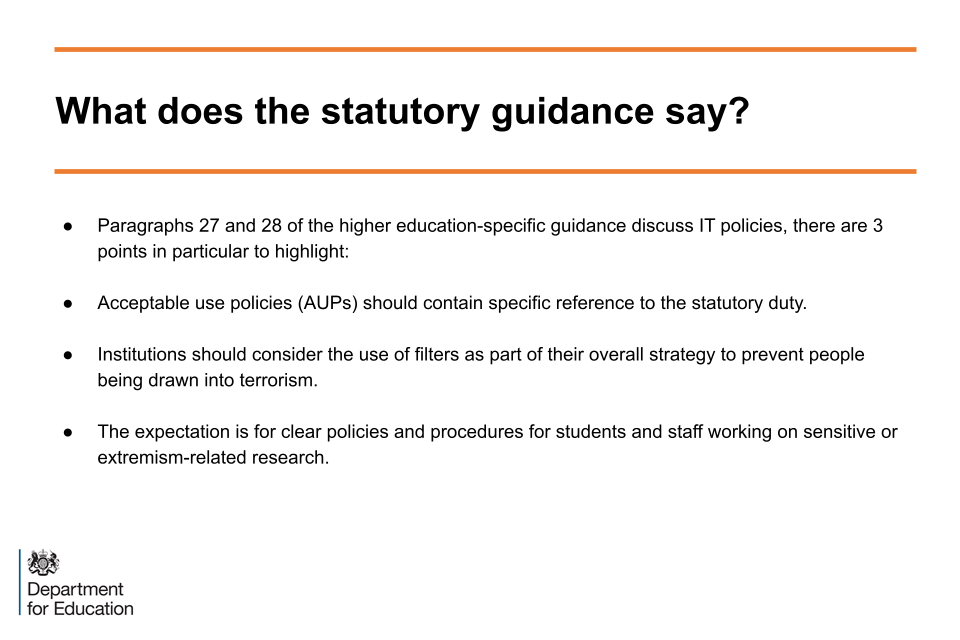
Image of slide 1: what does the statutory guidance say?
Acceptable use policies (AUPs)
These slides acknowledge the requirement to include reference to Prevent in AUPs, emphasising that reference alone to Prevent does not achieve compliance. AUPs should give examples of what is and is not permissible in the context of Prevent.
When considering Prevent and web filtering, Jisc offers a web filtering and monitoring framework. An online training package detailing how filtering can help is available from the Jisc website.
Policies also need to be communicated, applied and supported by appropriate policies on monitoring. Good practice will require institutions to ensure that other relevant procedures make reference to ICT policies. Staff and student induction should refer explicitly to AUPs.
Institutions should communicate any changes to policies effectively. They may find the model regulations produced by the Universities and Colleges Information Services Association (UCISA) useful.

Image of slide 2: acceptable use policies (AUPs)
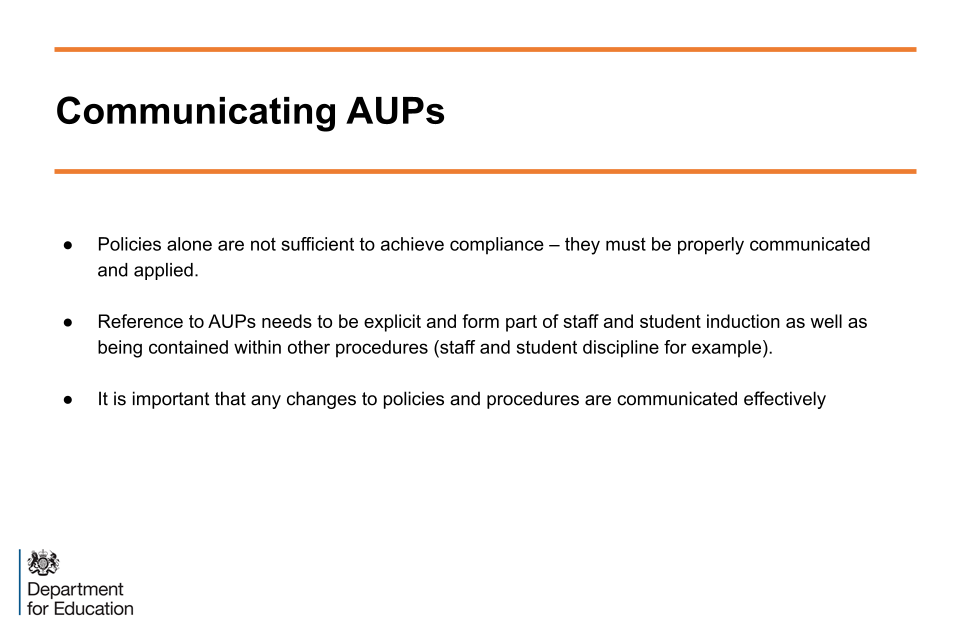
Image of slide 3: communicating acceptable use policies
Web filtering
This slide introduces the issue of web filtering. The guidance requires all relevant higher education bodies (RHEBs) to consider their use of web filtering and reporting to Office for Students (OfS) as part of the monitoring framework.
It is noted that how an institution approaches filtering is not an entirely new issue. For example, the filtering and blocking of sites deemed malicious or undesirable in the context of pornographic materials is common.
Many institutions will already have in place policies and procedures on web filtering, even if their stated policy is to employ only limited filtering.

Image of slide 4: web filtering
Web filtering in the HE context
These slides look at the complexity of filtering in the HE context.
There are many concerns within academia in respect of web filtering. They are, to some extent, shared by representatives from other professions.
Freedom of information is also an issue to consider. However, an approach which limits access to proscribed sites or, in the context of public libraries, materials that might be harmful to young people may be a relevant approach for some organisations.
These slides indicate that while a number of institutions continue to consider and reassess their filtering policies in respect of their Prevent statutory duty, some RHEBs already have filtering policies in place. Institutions will want to review approaches across the sector to inform local decisions on what will and will not work for them.
Institutions should review their Prevent risk assessments at least once a year and take the opportunity to review the filtering position as part of that process.
Like AUPs, filtering policies need to be transparent and well communicated. They also need to include a procedure to deal with examples where access to sites has been blocked for being inappropriate.

Image of slide 5: filtering in the higher education context
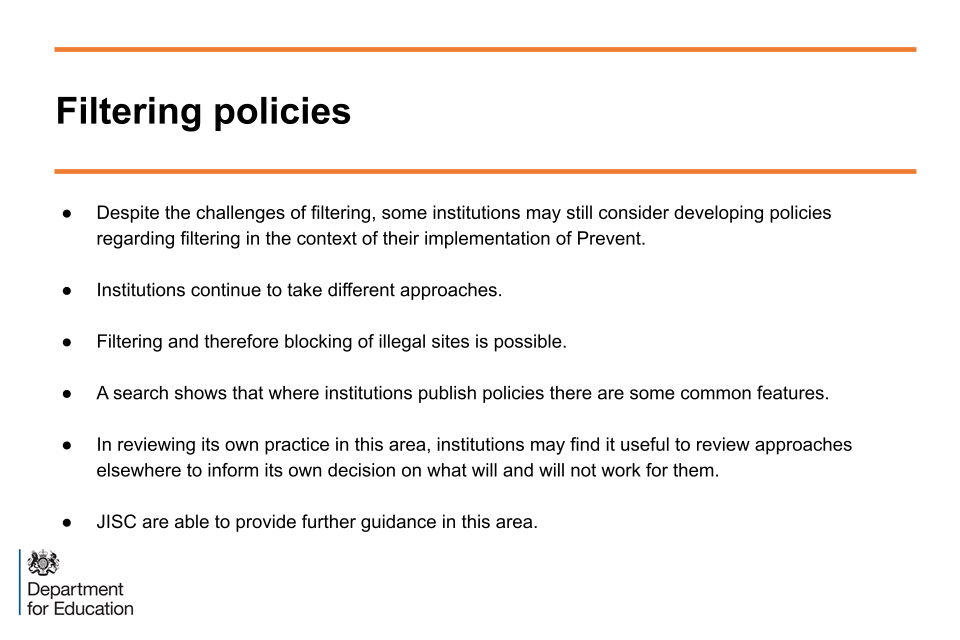
Image of slide 6: filtering policies
Referring to filtering in AUPs
It is important that AUPs cross reference policies on filtering, ideally within the section that deals with use of the internet. Institutions should identify the types of sites that may be blocked and what will happen in the event where someone tries to access a blocked site – an example statement is included. Ensuring due process has been undertaken for security sensitive research is key.
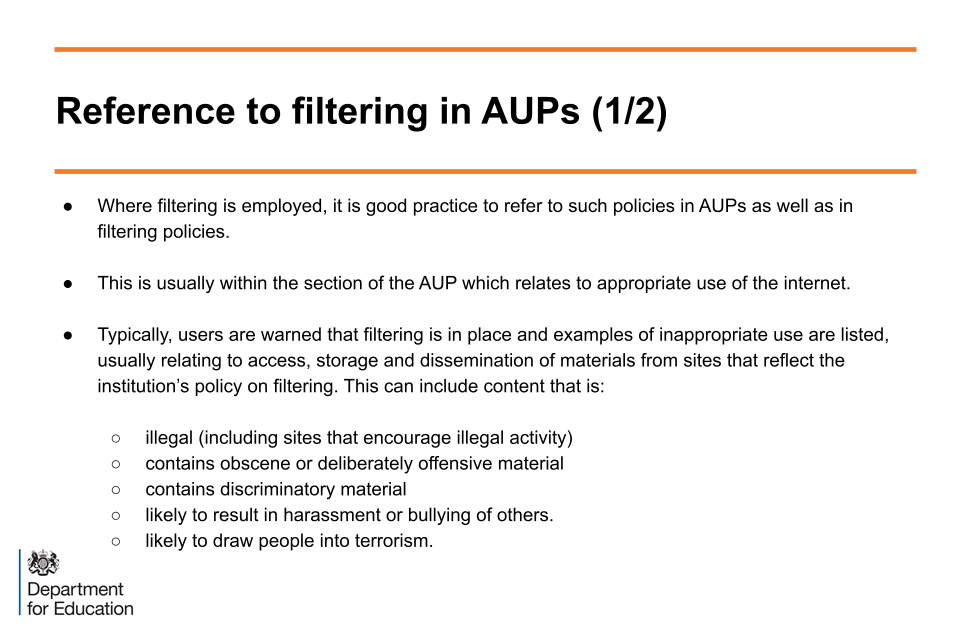
Image of slide 7: reference to filtering in acceptable use policies (1 of 2)

Image of slide 8: reference to filtering in acceptable use policies (2 of 2)
Research and teaching on sensitive topics
These slides acknowledge the importance of having guidance in place to provide for research and teaching on sensitive topics, including matters relating to violent extremism and terrorism, and drawing on the recommendations of the UUK guidance on research and teaching sensitive topics. The statutory guidance refers to the UUK’s ‘Oversight of security-sensitive research material in UK universities’ guidance.
Institution should have research ethics policies that include procedures where staff can request access to sites that might otherwise be blocked. This should be an issue that institutions have considered in a range of contexts.
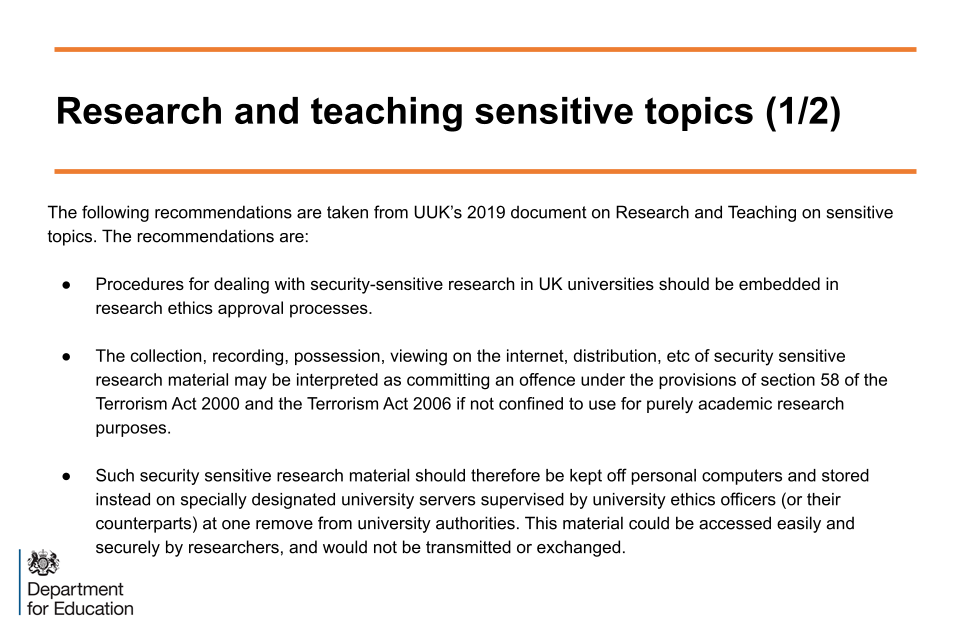
Image of slide 9: research and teaching sensitive topics (1 of 2)
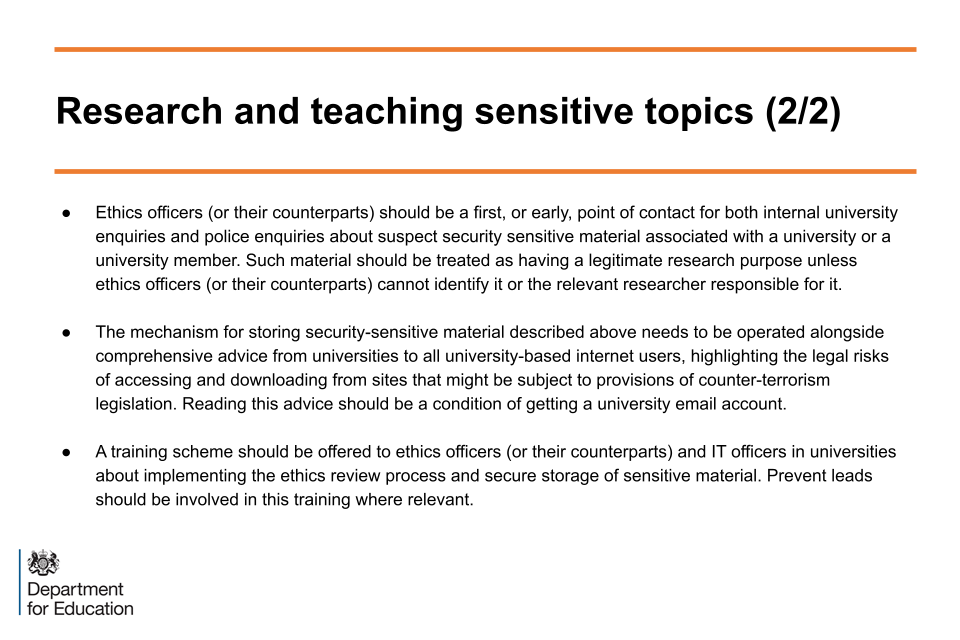
Image of slide 10: research and sensitive topics (2 of 2)
Summary
These slides seek to summarise the key points from the statutory guidance. The training slides have covered:
- how AUPs should include reference to Prevent and to filtering (if appropriate)
- to understand whether filtering is required
- good practice to follow to ensure that access to security sensitive material is appropriately managed
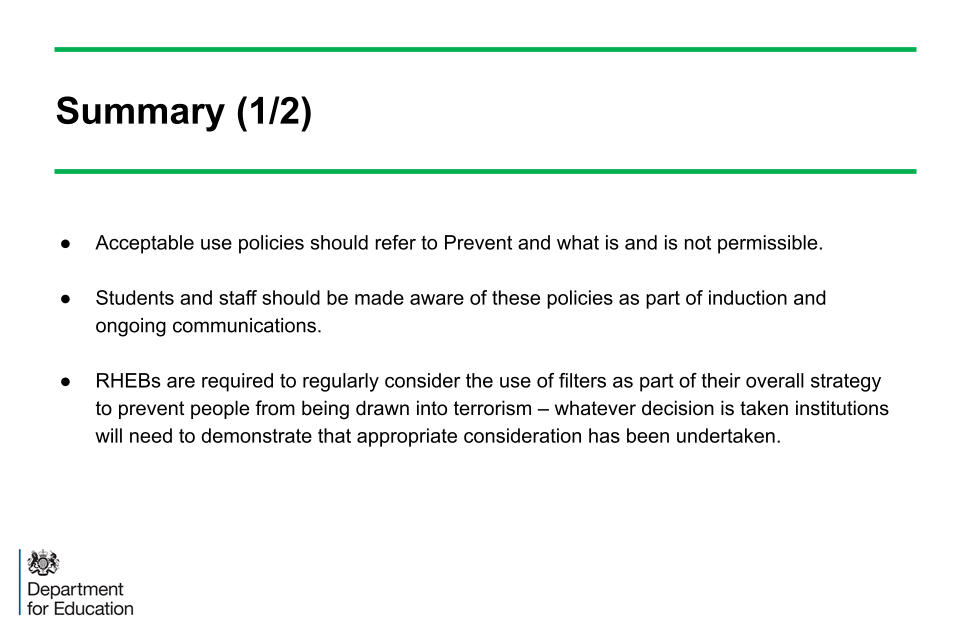
Image of slide 11: summary (1 of 2)
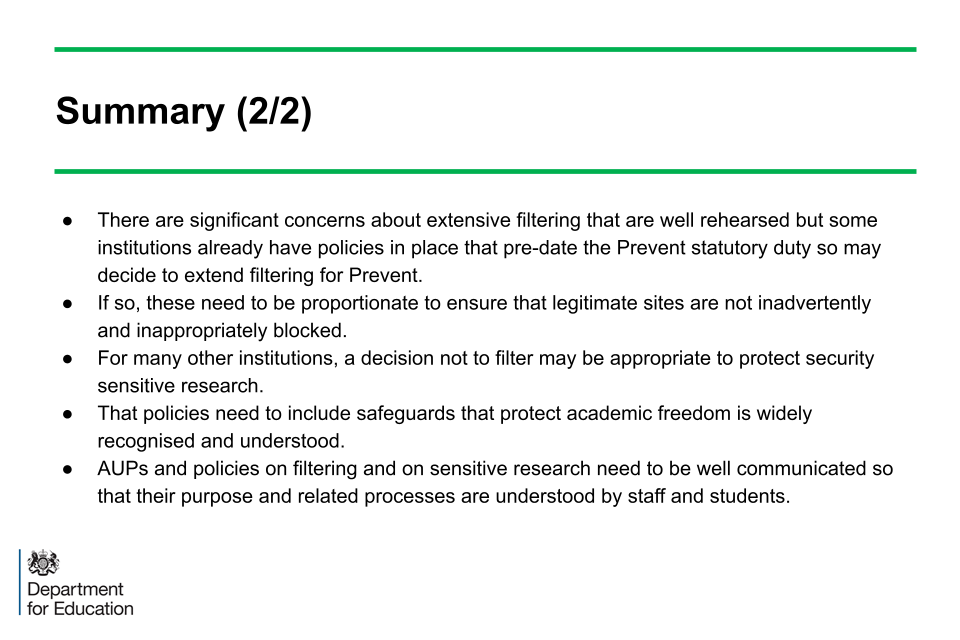
Image of slide 12: summary (2 of 2)
